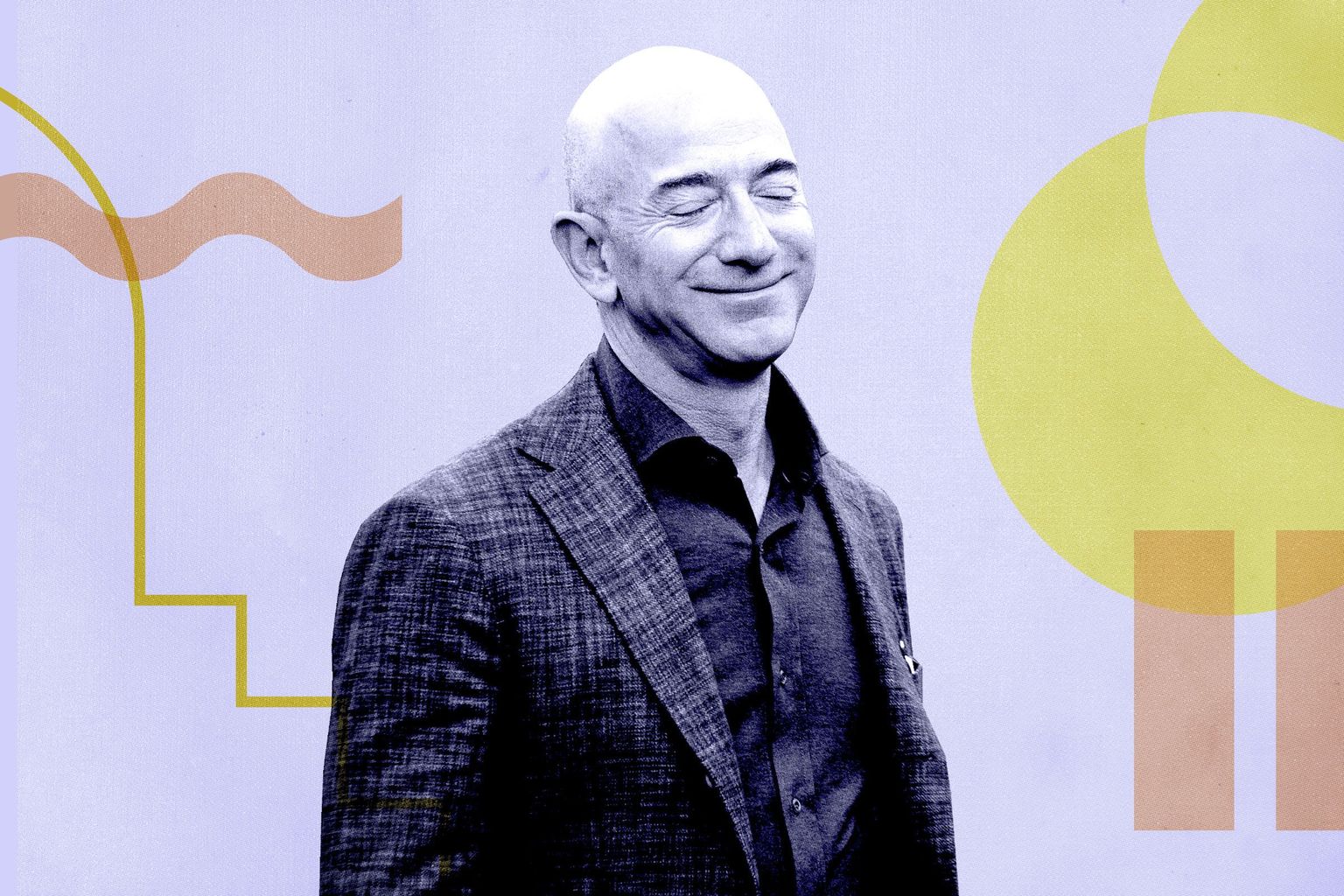12 steps for making “iconic” TV shows, according to noted storytelling genius Jeff Bezos
The bazillionaire once listed a dozen storytelling elements every Amazon TV show had to include. They say more about our obsession with storytelling rules than they do about making good TV.

Photo illustration: Emily Thiang/Shutterstock
In 2015, Amazon Studios released The Man in the High Castle, an alternate history TV series based on a Philip K. Dick novel by the same name. Amazon had (ahem) high hopes for the show: if it became a hit, the company might receive some of the critical and popular recognition that had so far eluded it. So when The Man the High Castle failed to draw Game of Thrones numbers, founder Jeff Bezos was noticeably displeased.
We say noticeably because, as business reporter Brad Stone reports in his recent book Amazon Unbound: Jeff Bezos and the Invention of a Global Empire, Bezos made quite a song and dance about the show’s supposed failings. According to Stone, Bezos grilled his executives for failing to stop the “terrible” show from happening, and singled Amazon Studios head Roy Rice out for particular scorn, lamenting his inability to create a cultural juggernaut. “This should not be that hard,” Bezos said, because all “iconic shows have the same basic things in common.” Lest those things not be immediately apparent, Bezos then went on to list them, supposedly off the top of his head:
- A heroic protagonist who experiences growth and change
- A compelling antagonist
- Wish fulfilment (e.g., the protagonist has hidden abilities, such as superpowers or magic)
- Moral choices
- Diverse worldbuilding (different geographic landscapes)
- Urgency to watch next episode (cliffhangers)
- Civilisational high stakes (a global threat to humanity like an alien invasion – or a devastating pandemic)
- Humour
- Betrayal
- Positive emotions (love, joy, hope)
- Negative emotions (loss, sorrow)
- Violence
After the grilling, Amazon Studios executives were required to send Bezos spreadsheets explaining how their TV projects addressed each of his 12 storytelling must-haves. Should one element be missing, the studio exec had to explain why.
The existence of a storytelling checklist (in spreadsheet form, no less) at one of Hollywood’s biggest entertainment companies probably says a lot about our current cultural era, dominated as it is by cookie-cutter franchises and risk-averse IP grabs. But it also says something about the Silicon Valley-isation of the creative industries at the hands of tech executives who have come to see storytelling as just another business output in need of optimisation. (Yes, Hollywood has always existed to make money, and it has a long history of churning out paint-by-numbers entertainment to that end. But the impulse to focus-group a new show or movie went into overdrive with the advent of streaming, as production companies suddenly found themselves swimming in viewership data they could mine to influence their decision-making.)
On the one hand, distilling storytelling into a series of rules and if-this-then-that workflow processes shouldn’t be too controversial. Storytelling is a craft that can be taught, and anything that can be taught can, push comes to shove, be reduced to a collection of edicts and principles. A quick search of your local bookstore (or unnamed online equivalent) will reveal reams of books outlining such rules and strategies, many of which are actually quite good.
But there are also some pretty obvious differences between cultural and technological products, and the processes that work well at producing the latter—checklists, rigid adherence to protocols, a firm grasp of calculus—don’t automatically make great versions of the former. For starters, storytelling ‘rules’ aren’t really rules, but general principles a writer might choose to incorporate into their work. Every storytelling rule can be broken—even apparently ‘unbreakable’ ones—and good storytellers will often disregard multiple rules to create something unique.
Bezos’s rules aren’t bad because storytelling is a sacred art form. They’re bad because following them would result in some truly bizarre television.
When Twin Peaks aired in 1990, David Lynch had no idea how his show’s central mystery would resolve—a clear defiance of the crime writing maxim to start with whodunit and work the plot out backwards from there. The show was a cultural phenomenon. But when the studio realised their showrunner was writing blind, they panicked and forced Lynch to decide who the killer was. The studio got what it wanted—assurance the plot was going somewhere—but the show was robbed of the mystery that had compelled audiences to tune in in the first place, and ratings soon tanked.
Creative storytelling decisions, like making it unclear whether your main character lives or dies in the final episode, can be exhilarating, but they also pose risks. To minimise the chance of failure, tech companies like Amazon and Netflix pore over viewer data to find patterns: when does someone pause, rewind or fast forward? What types of scenes and narrative beats do we tend to let play or skip? This data is then fed back to writers in a supposedly virtuous cycle of data-led TV production.
As cynical as the process may be, it has resulted in successful entertainment. Netflix only commissioned its David Fincher-directed, Kevin Spacey-fronted political drama House of Cards after learning that its viewers loved David Fincher, Kevin Spacey and the British version of House of Cards. That’s an extreme example of letting the algorithm create our culture for us, but it’s also the logical conclusion of a process that has always sought viewer input. Production companies have always placed the interests of viewers at the centre of their operations, and writers’ rooms have always leant on storytelling principles to structure their creations.
All of which is a long way of saying that Bezos’s rules aren’t bad because storytelling is a sacred art form that should be left untouched by commercial and professional insights. Rather, they’re bad because following them would result in some truly bizarre television.
Insisting on a heroic protagonist (rule 1) would mean shows like The Sopranos, Breaking Bad and Mad Men would never have been made. Diverse worldbuilding (rule 5) would have caused problems, too; The Sopranos rarely left New Jersey, and it took five seasons for Walter White to leave the sepia-coloured deserts of New Mexico. And while Bezos is right that superpowers (rule 3) and civilisational high stakes (rule 7) were a big part of Game of Thrones’ success, insisting on their presence in every show makes you wonder if the fantasy epic was the only show he’d ever seen.
We could go on—yes, your TV show should probably have positive and negative emotions (rules 10 and 11), and if Man in the High Castle didn’t, then I’d very much like to know how its screenwriters managed to fill the time—though at this point it’s starting to feel like beating a dead horse. As Stone later clarified, Amazon Studies eventually abandoned Bezos’s 12 rules, presumably around the time Bezos also stepped down as Amazon CEO.
That said, one gets the impression that Bezos’s checklist may live on in some less formal way. A cursory glance at Amazon’s recent television lineup reveals an abundance of civilisationally high-stakes adaptations, from the supernatural wish fulfilment of The Boys to the sword and sorcery antics of The Wheel of Time. The fact that the studio spent nearly half a billion dollars producing its upcoming Lord of the Rings series certainly indicates what kinds of shows it’s interested in producing.
One can only hope that when The Lord of the Rings: The Rings of Power finally premieres this September, it features enough of rule number 8 (humour). With that much money on the line, a little levity wouldn’t go astray.
